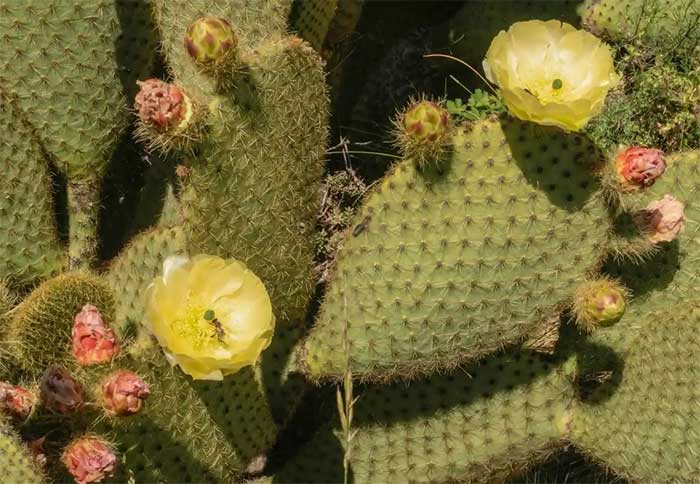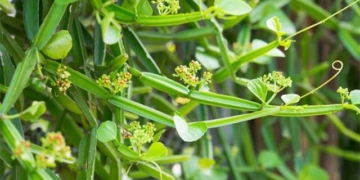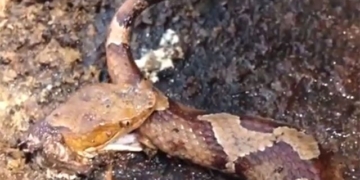The people of Valais, Switzerland are accustomed to the sight of snow-covered mountain slopes during winter. However, as the Earth warms, what they are now witnessing are cacti.

Cacti are replacing snow in many areas of the Alps. (Photo: Peter Oliver Baumgartner/Guardian).
Prickly pears and other cactus species are thriving on the hills surrounding Sion, the capital of Valais. Scientists estimate that prickly pears now make up 23-30% of the low shrub cover in the region.
Valais is not the only place witnessing a strong proliferation of cacti. They are also growing in the Swiss cantons of Ticino and Graubünden, as well as in the neighboring Italian regions of Aosta Valley and Valtellina.
Mr. Yann Triponez, a biologist working at the Valais nature conservation agency, stated that prickly pears have been present in this area since the late 18th century, when some were brought over from South America.
However, the warming climate in the Alps—including reduced snowfall—has provided this species with more opportunities to thrive.
“These species can withstand temperatures of -10 degrees Celsius to -15 degrees Celsius without any issues,” said Professor Peter Oliver Baumgartner, who was commissioned by the Valais authorities to write a report on prickly pears. “But they prefer dry places and do not like snow.”
In lower elevation areas of the Alps, snow is becoming increasingly rare. According to the Swiss meteorological agency, the number of days with snow in areas below 800 meters has halved since 1970. Meanwhile, the rate of temperature increase here is twice the global average.
Swiss officials are concerned that cacti—an invasive species—could spread to nature reserves. However, preventing their spread is not easy.
“We can manage their spread, but I don’t think we can completely eliminate them,” Professor Baumgartner remarked.


















































